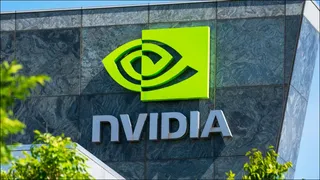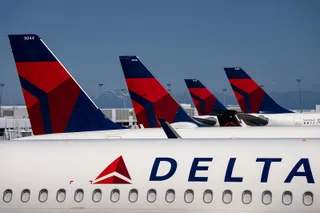How Google, Amazon, and Square are experimenting their way to ecosystems customers can't abandon
Google just expanded virtual try-on, Amazon installed prescription vending machines, and Square launched AI voice ordering, Bitcoin payments, and five more tools at once.

Google just expanded virtual try-on, Amazon installed prescription vending machines, and Square launched AI voice ordering, Bitcoin payments, and five more tools at once.
Google just expanded virtual try-on to stores in three new countries. Amazon installed prescription vending machines inside medical clinics. Square launched AI voice ordering, Bitcoin payments, and five more tools at once.
At first glance, these look like product updates. But here's the tension: they're no longer competing on features. They're competing on gravitational pull. And the real story isn't about innovation speed, it's about how big players are quietly making switching feel irrational.
If you're building products, leading strategy, or competing against platform players, understanding this shift is critical.
Why this matters
Traditional competition was straightforward: your rival offered two-day shipping; you provided same-day. They launch a mobile app, you launch a sleeker one. That's no longer enough. Today's tech giants aren't asking "What feature do we need to match?" They're asking, "What additional step in the customer journey can we own?"
Each experiment, whether it's Google's virtual try-on, Amazon's pharmacy kiosks, or Square's restaurant tools, isn't a new feature. It's a new layer of dependency. They're not chasing transactions anymore. They're building systems of habit where every interaction feeds the next.
Google: Capturing decisions before they become searches

Google's AI-powered virtual try-on now includes shoes across Australia, Canada, and Japan. Upload a photo, see how a pair fits, and decide before you ever click "buy."
That might sound like convenience, but it's really a decision capture. With Doppl, Google's experimental app that creates AI videos of outfits in motion. Google isn't just helping you shop. It's quietly absorbing every step between inspiration and purchase.
Search → Visualisation → Decision → Transaction all without leaving Google.
Amazon and Walmart can replicate the tech. But only Google controls the moment of intent. The more of your pre-purchase behaviour lives in Google, the less you need to go anywhere else.
Amazon: Owning healthcare before pharmacies can react

Amazon's new Pharmacy Kiosks are rolling out in One Medical clinics across Los Angeles. Patients finish their appointment, and prescriptions are ready in minutes through the Amazon app they already use.
It's not a new business. It's the next step in a long playbook:
- 2018: Buys PillPack
- 2020: Launches Amazon Pharmacy
- 2022: Acquires One Medical
- 2025: Installs kiosks at the point of prescription
Each piece reinforces the last. Once your health data, payment method, and medication history live in Amazon's system, switching isn't a matter of preference; it's a rebuild.
And let's be honest: the timing couldn't be better. Rite Aid closed all stores. CVS shut 1,000+ locations in 2021. Walgreens closed 500 stores in the past year.
Here's the catch: Amazon isn't "entering" healthcare. It's redefining logistics at the point of care. It doesn't need to out-innovate pharmacies. It just needs to make staying inside the Amazon loop more efficient than leaving it.
Square: Making switching irrational

Square's latest launch reads like a marathon press release:
- AI voice ordering
- Bitcoin payments (zero fees for a year)
- Integrated crypto wallet
- AI assistant
- Grubhub integration
- Redesigned kiosks
- Smarter inventory management
But the strategy is clean: own every operational pain point before someone else does.
Restaurants using Square now handle payments, ordering, delivery, inventory, and even Bitcoin holdings – all within one orbit.
The Bitcoin move is particularly clever: Square lets merchants convert 1-10% of earnings to Bitcoin. They accumulated 142 Bitcoins ($17M+). Now they can convert up to 50% and accept Bitcoin from customers.
Each new feature compounds dependency. Leaving means retraining staff, re-exporting data, and losing financial integrations.
My take: Connecting steps in the customer journey
- Connect adjacent steps seamlessly.
Google went from search → try-on → outfit planning. Amazon from pharmacy → clinic → prescription point. Square from payments → ordering → delivery → finance. Each connection multiplies loyalty. - Make switching costs compound automatically.
No dark patterns. Just natural friction. Every integrated touchpoint raises the exit cost without ever saying so. - Disguise lock-in as customer value.
Google's try-on solves uncertainty. Amazon's kiosks solve prescription delays. Square's AI voice ordering solves time loss. Every "solution" doubles as a loyalty anchor.
These companies aren't manipulating customers; they're building systems that become genuinely useful and, over time, hard to replace.
Looking ahead
Ecosystem depth is becoming the new brand moat. It's not about who ships more features; it's about who owns more moments. But here's what I keep thinking: The same strategy that creates convenience can also create fragility. The same integration that drives loyalty can also trap customers.
As someone who watches these platform dynamics play out, I'm excited to see whether regulators step in before ecosystems become truly inescapable. Competitive advantage no longer comes from better products. It comes from connecting enough steps in a customer journey that using anyone else requires painful reconstruction.
So if you're building the next platform, ask yourself: Which steps in your customer's journey could you connect before switching becomes too expensive to consider?



